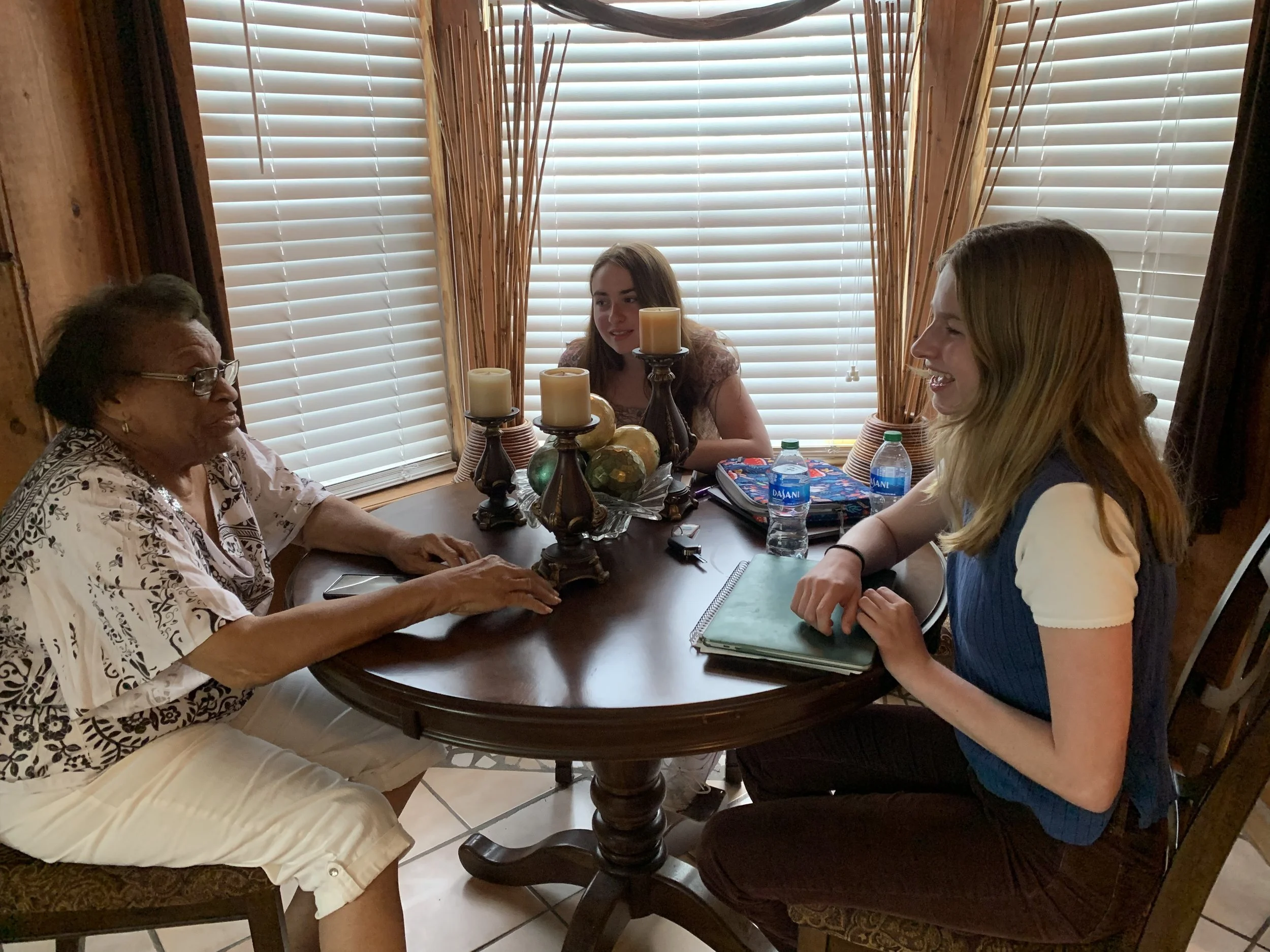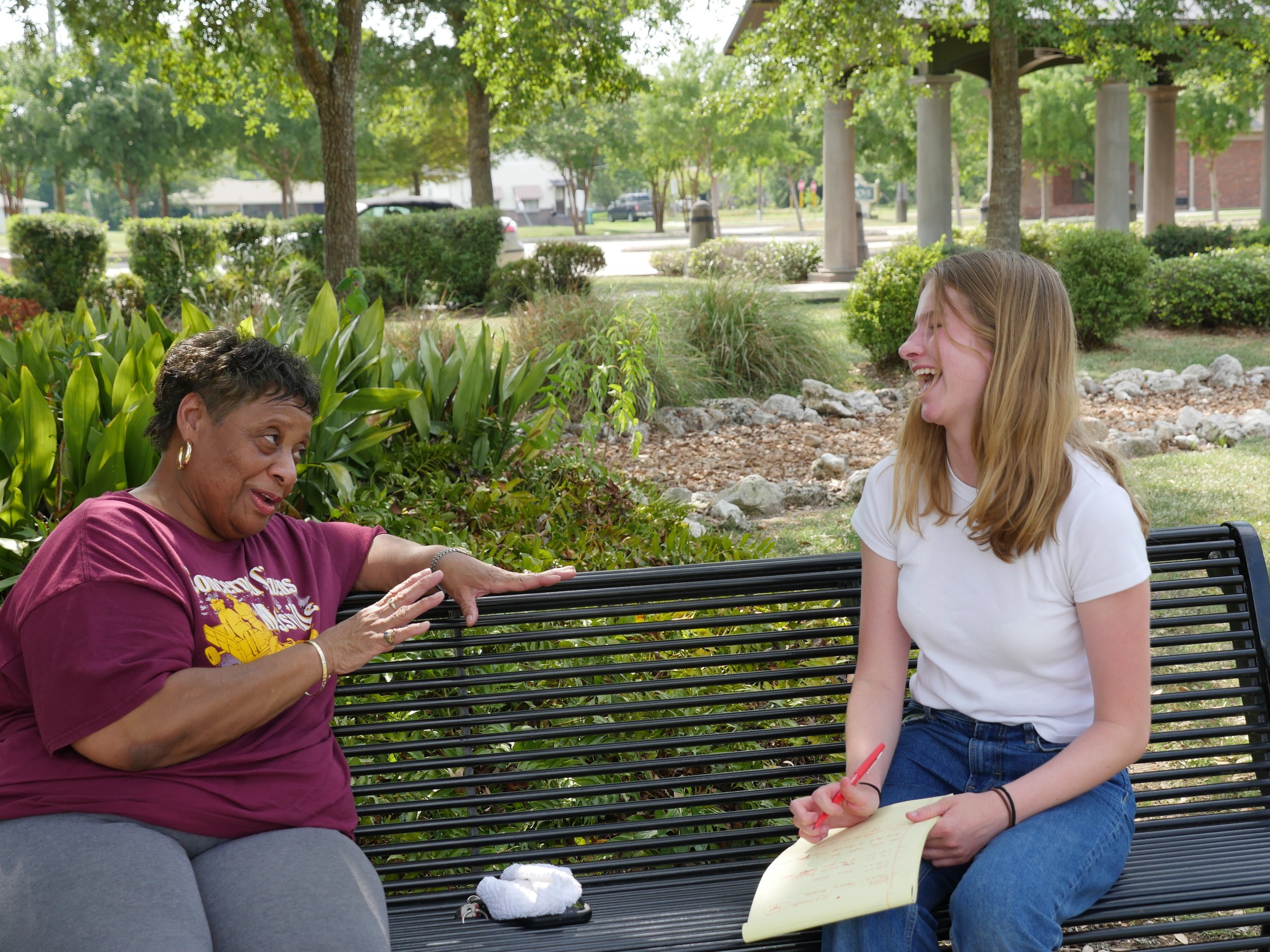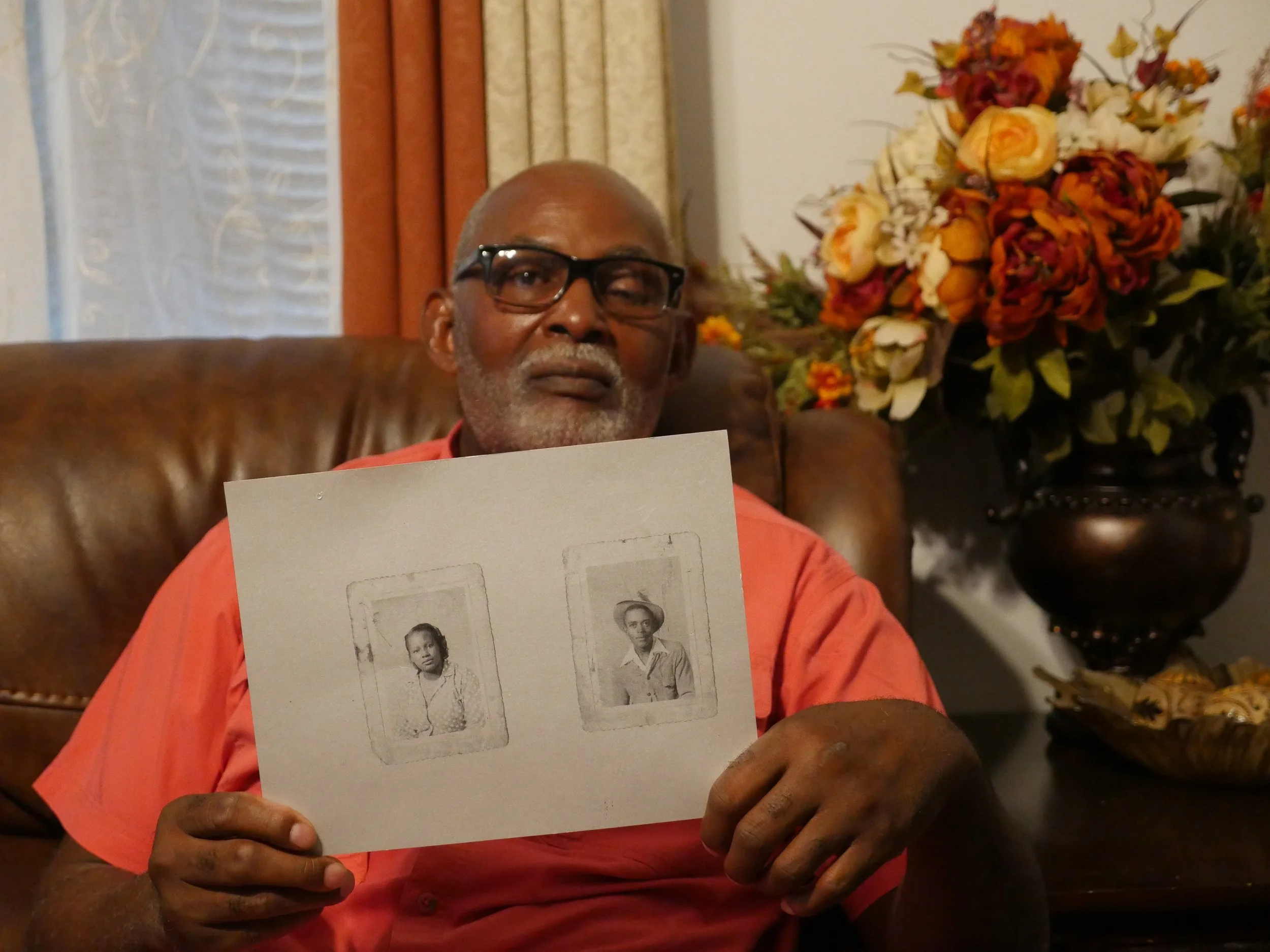From Inaction To Interconnectedness: Reflections On My 2022 Louisiana Documentation Trip
Anna Grant-Bolton
It was in the classroom that I first fell in love with the study of human rights. In the second row of Professor Cavallaro’s Human Rights Advocacy class, I explored the intellectual basis for human rights, studied the foundational documents, and critically examined the failures of mainstream human rights movements. I quickly became drawn into the deep and complex world of human rights, impassioned by the right to human dignity and committed to radical reimaginings of our world’s oppressive systems. But it wasn’t until I sat in the lively, crowded room of Ms. Hampton’s house in St. John the Baptist Parish, Louisiana that I understood what all of my prior learning was leading up to.
As soon as we walked through the door of Ms. Hampton’s house, I was met with a swirl of introductions as residents greeted me with hearty handshakes and warm smiles. Ms. Hampton, the president of Concerned Citizens of St. John the Baptist Parish (a local environmental justice community organizing group), led us into the living room. After everyone found their seats and the sound of warm, indistinct chatter grew, my clinical supervisor, Ruhan, began a round of introductions.
The purpose of our trip was to interview residents affected by short-term health conditions due to the high chloroprene emissions from Denka, a large chemical plant in St. John the Baptist Parish. The information collected from these interviews would be incorporated into a complaint against the Japanese Bank for International Cooperation (JBIC), the export credit agency that loaned Denka the funds to purchase the chloroprene plant. Despite its participation in poisoning an overwhelmingly low-income and Black community, JBIC claims to abide by strict environmental and social standards.
After Ruhan described the JBIC complaint process, Molly and I shared a list of short-term chloroprene exposure symptoms that we had researched that morning. Then, we asked who would like to be interviewed and added as a complainant. To our surprise, every single person wanted in.
It was at the first meeting with Concerned Citizens, in the ordinary but beautiful in-between moments, that I was reminded of why I was here in the first place: to bear witness to the humanity of affected community members and work alongside them in their fight for justice. These moments of human connection were both simple and powerful. Scrolling through photos of Ms. Taylor’s grandson. Bonding with Mr. Schnyder over the movie, Coda. Telling Ms. Hampton about my grandmother.
The next morning, after grabbing a cup of tea and an almond croissant, Molly, Ruhan and I reviewed the interview outline that we had drafted the night before. Ruhan gave us detailed feedback that we incorporated into the outline and reminded us of the active listening skills we learned in the Advanced Human Rights Advocacy seminar. I excitedly rehearsed the questions in my head on the drive to St. John’s Parish.
As we walked into Ms. Hampton’s house for the interviews that day, I felt confident. Just a few months before in the UNHR’s human rights simulation, I led dozens of interviews with fictitious human rights actors, with each providing me personalized, specific feedback on my performance. After the simulation, the feedback was shared with me during a meeting with Professor Cavallaro from the UNHR, where we discussed the strengths and weaknesses of my interviews. By the time of the Louisiana trip, I knew what I had to do to lead a strong interview. By providing me with interview feedback from the simulation, I not only received targeted information on how to improve my human rights advocacy skills, but the UNHR ensured that any significant advocacy mistakes would happen in a low-stakes, controlled environment, rather than in a real human rights situation.
Our interviews that day were extremely successful in gathering evidence of short-term chloroprene exposure. Each conversation was woven with vulnerability, loss, and laughter, and I came away feeling more seen as a person myself. After we finished our interviews, Ms. Hampton invited us to eat cake with her. Between bites of berry and cream, we laughed over the challenges of community organizing and stories of her grandchildren.
The next morning, we woke up at 5 AM, piled into our blue rental sedan, and drove west until we hit Mossville. Once a tight-knit Black community, Mossville had been broken apart (both physically and relationally) following an exploitative buyout program by the petrochemical company, Sasol. That day, our goal was to film and document the stories of Mossville community members. After stopping for breakfast at a nearby coffee shop, we drove to meet Ms. Tammy, a grandmother who took the buyout and experienced significant emotional distress from leaving her community. In her small but lovingly decorated trailer home, Molly and I filmed Ms. Tammy's story using professional camera equipment that we had been trained to use. After our conversation ended, we packed up our filming materials and hugged Ms. Tammy goodbye.
The afternoon was a whirlwind, as we drove from town to town filming five interviews. Though the conversations were bound by the shared loss of a beloved community, each story was profoundly personal. Ms. Peters shared the deep ancestral connection she feels to Mossville. Mr. Payne showed us pictures of his parents when they were children, his fingers tracing the edges of the photograph.
Once the interviews ended, we drove through Mossville. The stories of Mossville we heard that day were animated by rich descriptions of community. But as we drove down the narrow, weathered streets, Mossville was silent. Tall grass grew around worn concrete slabs, shadows of houses that were torn up from the ground. As I looked out at the empty roads, I understood why these interviews mattered. By working with community members to record their stories, we resist the erasure of this fiercely loved town. Each conversation was a tenderly crafted ode to Mossville, a commitment to not forget.
The next afternoon (after a celebratory visit to New Orleans’ French Quarter) our trip came to an end. Under the thin yellow light of the plane, I journaled about my experience ferociously, trying to capture each of the many feelings swirling inside of me: wholeness, joy, connectedness, passion, gratitude. “It is such a special feeling,” I wrote. “I grew so much in this process.”
When I first applied to the UNHR’s Wesleyan Pilot Program, I never could’ve anticipated how it would change my life. It was through this program that I learned how to actively listen and interview, research and write for a human rights report, craft advocacy programming, film professionally, and connect with affected community members. The close supervision and individualized feedback provided me an unparalleled opportunity to grow as a thinker, advocate, and person. The UNHR made me fall in love with environmental justice and the messy, beautiful fight for human dignity.
I am done simply learning about social justice in the abstract. A meaningful engagement in the field of human rights requires both education and action. It requires putting down the textbook and stepping outside into this complicated world so full of oppression and resistance. It demands a commitment to connection and the reimagination of systems of injustice.
So, what do you say? Will you join me?



